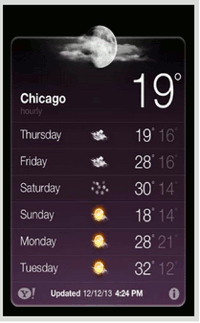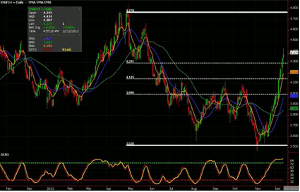In the last five weeks natural gas futures have advanced H/L $1, which represents a $10,000 move, writes Matthew Bradbard of RCM Asset Management.
Natural Gas (UNG): A 61.8% Fibonacci retracement was completed as of Thursday while Friday's action added four more cents.
Friday's storage report showed that supplies declined less than analysts had expected. The EIA reported that 81 billion cubic ft were pulled from storage the previous week.compared with expectations for a 86 bcf decline. Supplies as of the previous week stood at 3.533 trillion cubic feet, 7.2% below the exceptionally high levels we experienced last year and 3% below the five-year average for the same week last year.
A widespread cold spell in much of the country, especially in regions that use natural gas, has aided in the recent jump in prices. As a new resident to Chicago, I can attest to the bone-chilling temperatures. One of my colleagues has advised me that if it is stylish, it likely will not keep you warm.hence my new earmuffs that I have added to my wardrobe. This frigid weather has led to higher trade being that roughly 1/2 of the US households rely on natural gas to heat their homes. As temps start to thaw and we warm in the coming weeks it is my opinion that we will see prices back off.
Picking tops is a fool's game BUT it would appear prices have overshot to the upside and a snap back lower should play out in the coming weeks. As opposed to short futures, I have advised clients to work into bear put spreads in February. Those that opened these positions a few weeks ago and currently down on the trade were advised to lift their bottom leg Friday by buying back and booking a partial profit on their trades. The eight-day MA currently stands around $4.20 and we will need to settle below that pivot point to confirm an interim top. I think once we do, futures could trade back near $4, which would represent a 10% loss from current trade.
For fresh entries, a February $4.25/4.00 put spread with 47 days until expiration could be purchased as of Friday's settlement near $950/1,000 per. This 25 cent spread represents a $2,500 spread. If held until expiration your BE would be around $4.15.
By Matthew Bradbard of RCM Asset Management




















